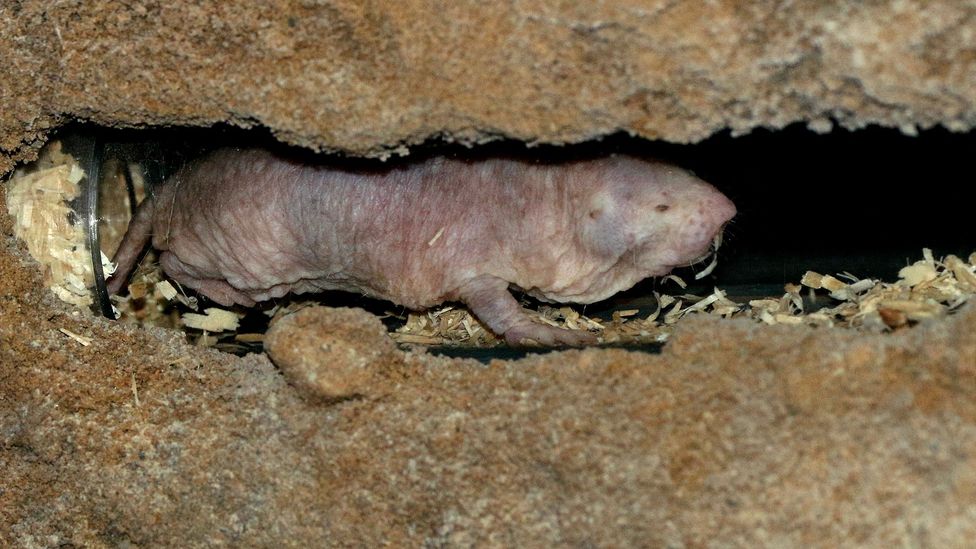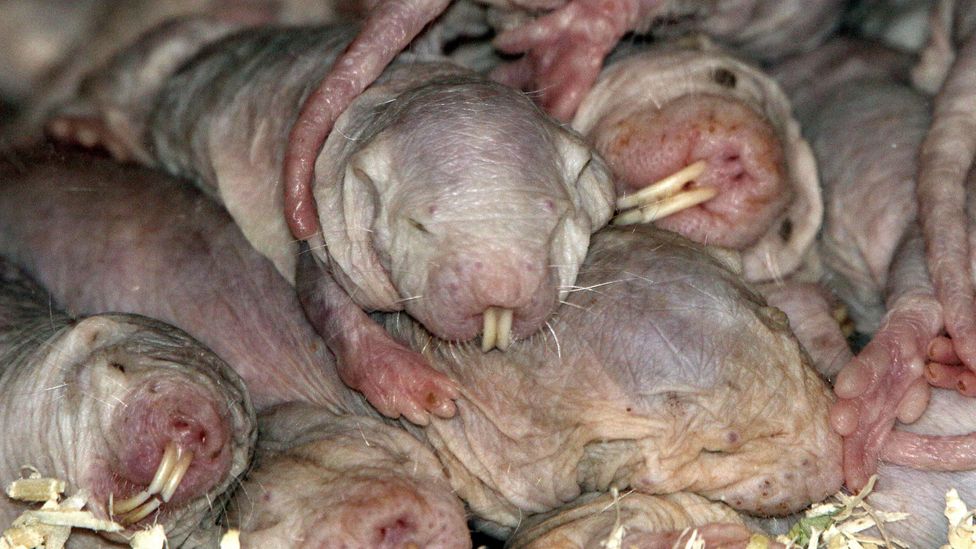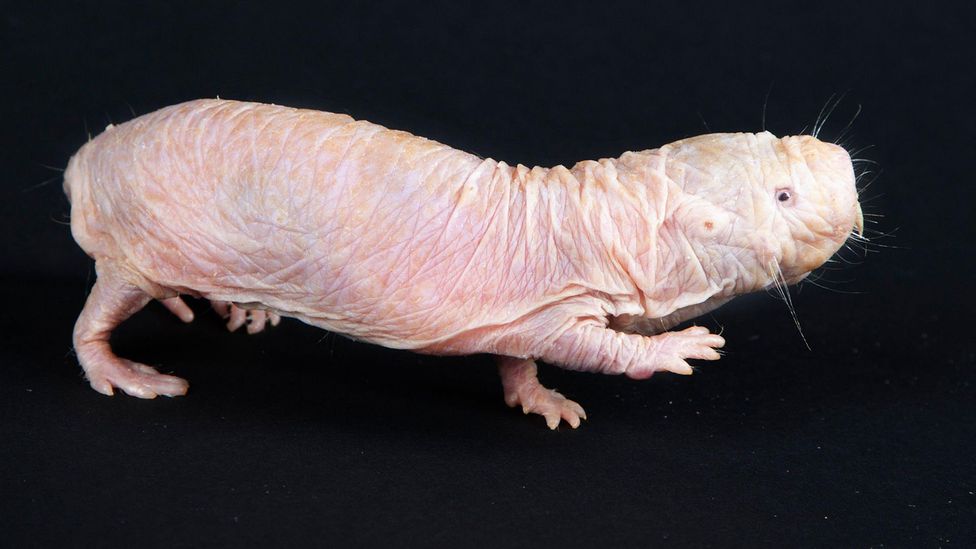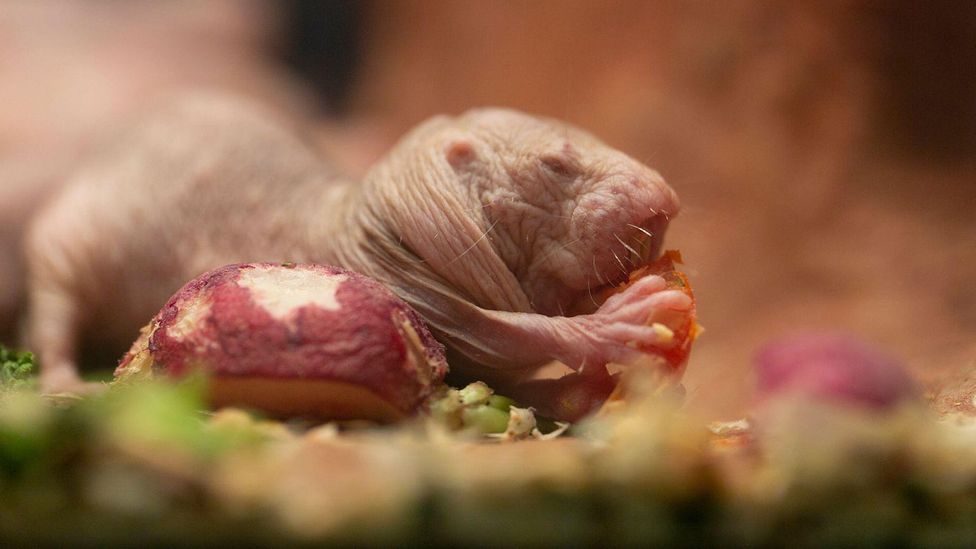It’s no secret that naked mole-rats, wrinkled, nearly hairless rodents with long buck teeth protruding from their mouths, are not the most attractive animals on Earth. But what these creatures lack in beauty, they make up for in a miscellany of extraordinary characteristics that are intriguing zoologists and medical researchers around the world.
Despite their small size – they measure between three and 13in (7.6 and 33cm) – naked mole-rats live to an average of 30 years, are resistant to chronic diseases, including diabetes, and have an intriguing reproductive system. The animals also provide environmental benefits by acting as “ecosystem engineers” and improving biodiversity in the soil when burrowing to make nests.
Immune to ageing and pain, these strange-looking creatures have long fascinated scientists. Now research is revealing that they may hold the key to understanding a range of human conditions, such as cancer and ageing.
Although we have historically studied mice and rats to understand the secrets of human biology, scientists believe naked mole-rats have special advantages for medical research.
Heterocephalus glaber, the species’ scientific name, which essentially means “different headed bald thing”, is native to the hot tropical reaches of north-east Africa. In the wild, they live in large underground colonies numbering up to 300, with a maze of tunnels and chambers the length of several football pitches.
The harsh low-oxygen conditions in which naked mole-rats live might be a clue to some of the species’ unusual traits. Most aerobic life would struggle to survive in such low oxygen environments, yet naked mole rats are the longest living rodents. A similarly sized mouse might live two years, next to the mole-rat’s 30 years or more – if you scaled that relationship up to our size, roughly speaking, it would be like humans having a wrinkly cousin capable of living to 450 years.
Found in the wild in Kenya, Ethiopia and Somalia, naked mole-rats live in colonies of around 70-80 members, with some home to as many as 300 animals. Highly social, these colonies are ruled by one queen and follow a strict hierarchy. Members oversee different jobs, such as those who bring back the underground parts of plants, such as bulbs, roots and tubers, which they eat, alongside faeces.
It’s a very different picture to the common causes of death in humans. “One in two humans are likely to get cancer,” says Smith. “Mice and rats have a similar likelihood of developing cancer, but by contrast, naked-mole rats almost never get cancer – it’s very rare,” he says.

Naked mole-rats’ underground lifestyle helps protect them from cold, rain and other climate extremes (Credit: Alamy)
The reason naked mole-rats evade cancer is still a mystery. Numerous hypotheses have been put forward over the years, with scientists struggling to provide a robust explanation.
According to one theory, naked mole-rats have a particularly effective form of an anticancer mechanism called cellular senescence – an evolutionary adaptation that prevents damaged cells from dividing in an out of control way and developing into cancer. Another theory suggests that naked mole-rats secrete a complex “super sugar” that stops cells from clumping together and forming tumours.
READ ALSO: 2023 Census: NPC tasks Yobe journalists on effective reportage
He studied the molecular basis for this tolerance, identifying a gene that causes acid to act like an anaesthetic rather than an activator of naked mole-rat sensory nerves.

Naked mole-rats live in large underground colonies numbering up to 300 (Credit: Alamy)
Gisela Helfer, a professor in physiology and metabolism at the University of Bradford in the UK, says naked mole-rats are also the ”perfect model” for learning about human puberty.
Alongside the Damaraland mole rat, naked mole-rats are one of only two examples of eusocial mammals that live in colonies of overlapping generations where only one female is responsible for breeding and the rest work together to raise the brood.
One in two humans are likely to get cancer, but naked mole-rats almost never get cancer – Ewan St John Smith
The naked mole-rats Helfer keeps at Bradford University fascinate her due to their ”incredible intelligence” and a few ”bonkers” habits. Inside their highly organised colonies, they have nesting chambers for sleeping and toilet rooms for keeping their habitats clean, she says. When pups were born, she was stunned to see the colony had created a “nursery”, for rearing young naked mole-rats.
They also ”move back and forwards equally fast” and rarely use their small beady eyes, instead relying on sensory whiskers for navigation when underground, she explains.

Immune to ageing, pain and cancer, naked mole-rats have long fascinated scientists (Credit: Alamy)
Naked-mole rats also have unique ways of communicating with each other, determining who is friend or foe through various dialects – much like humans.
Their classic ”chirp” call conveys information unique to the animal’s group, which one study suggests is learned culturally, rather than genetically. Noises are often related to the queen, with cross-fostered pups adopting the tone of the colony that raised them, which can change if the queen is replaced.


